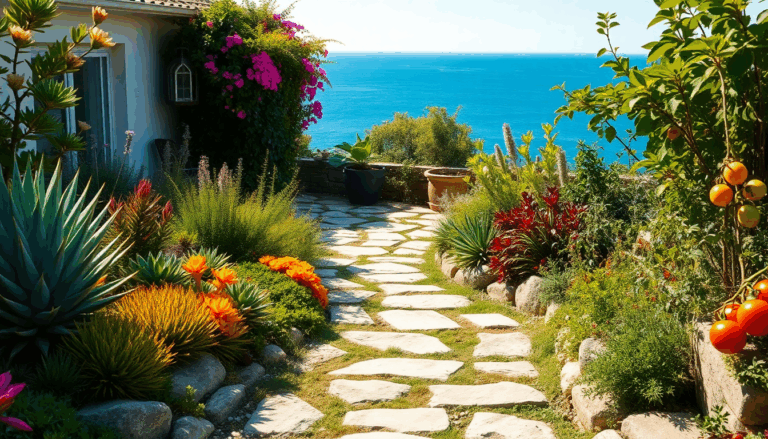As the warm season rolls around, many of us feel that familiar urge to spruce up our vacation home gardens. Whether your getaway is perched by the sea or nestled in the mountains, it’s essential to create a space that’s both visually stunning and functional. Ready to transform your green area into a veritable
paradise?
Emerging Trends in Sustainable Garden Design
Designing a coastal garden involves more than just picking pretty plants—it’s about embracing the unique seaside environment. With factors like wind, salt spray, and the occasional drought to consider, selecting resilient plants that thrive under these conditions is key. The goal? Enhance the natural landscape without overwhelming it. Take sea holly (Eryngium maritimum), for example. It not only
withstands salt but also blooms in summer and requires minimal watering. How’s that for a low-maintenance beauty?
Other fantastic options include tree heath (Erica arborea) and shrubs like the strawberry tree (Arbutus unedo) and mastic (Pistacia lentiscus), perfect for creating fragrant evergreen hedges. For borders, consider prostrate rosemary (Rosmarinus officinalis Prostratus) and lavender (Lavandula angustifolia), both known to attract bees and butterflies.
Just imagine the delightful aroma wafting through your garden!
Now, let’s talk layout. Picture your outdoor space as an extension of your living room, complete with distinct areas tailored for different times of the day. You might carve out a sunbathing zone with lounge chairs, a barbecue area surrounded by aromatic plants, and a shaded nook next to a fountain. Using local stone pathways or low walls to define these spaces is ideal, while permeable paving helps manage summer heat. Wouldn’t it be wonderful to sip an aperitif outdoors in such a thoughtfully designed setting?
Business Cases for Sustainable Garden Practices
If your vacation home is tucked away in the mountains, your garden design strategy will need a bit of a twist. Here, temperatures can plummet, and thermal fluctuations are common, so choosing plants that thrive in the cold and acidic soils is crucial. Rhododendrons (Rhododendron spp.) and azaleas are spectacular choices, bursting into bloom come spring. Have you ever witnessed a flowering mountain garden? It’s truly a sight to behold!
For borders, look into cold-resistant lavender varieties and ornamental sage (Salvia nemorosa). Dwarf juniper (Juniperus communis ‘Depressa’) and mountain pine (Pinus mugo) can serve as protective hedges, offering structure with minimal upkeep. And don’t forget about small fruits like currants and raspberries, which not only blend beautifully into the mountainous landscape but also provide sweet summer delights. Have you ever savored a freshly picked raspberry from your garden?
In this context, creating warm areas is essential. A raised wooden deck with a roof can serve as a cozy refuge during inclement weather, allowing you to enjoy your garden even when Mother Nature isn’t cooperating.
Practical Implementation Strategies for All Gardens
No matter if you’re choosing a seaside or mountain retreat, there are some practical elements to consider for making your garden a welcoming haven. Installing an outdoor stove or a wood-burning fire pit enhances comfort, letting you enjoy your outdoor spaces even on cooler evenings. And let’s not overlook lighting; solar or rustic LED lights can create enchanting atmospheres. Have you thought about how to illuminate your garden for those magical summer evenings?
In conclusion, designing the garden of your vacation home is all about thoughtful planning that respects the specific characteristics of your location. Whether you’re aiming for a Mediterranean vibe by the sea or an alpine retreat in the mountains, careful botanical choices and smart space organization can turn your outdoor area into a true paradise. Isn’t it time to bring your garden dream to life?

